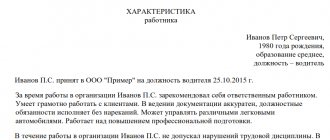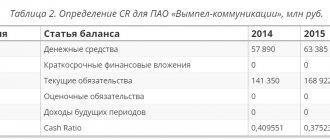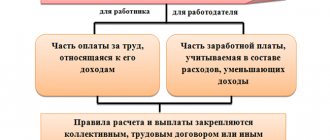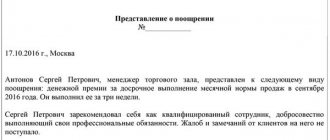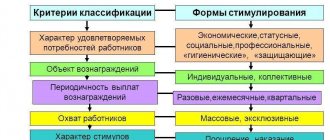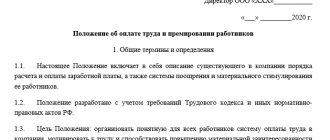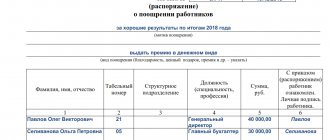Development of a bonus system for personnel in the organization
By virtue of Art. 192 of the Labor Code of the Russian Federation, the employer has the right to reward those employees who conscientiously perform their duties. One of the ways of remuneration is a bonus. Bonus payments, which by their nature are stimulating, by virtue of Art. 135 of the Labor Code of the Russian Federation are included in the wage system. In addition, this norm directly states that employee bonus systems are established by internal acts of the organization, in particular, local acts, collective agreements, and agreements. It is not prohibited to establish the procedure for bonuses for a specific employee in the employment contract, due to the provisions of Art. 57 Labor Code of the Russian Federation.
To ensure that work is organized as efficiently as possible, bonus systems are being introduced. In practice, the bonus system most often consists of two elements - salary and bonuses. In most cases, they are established by a local act (Article 8 of the Labor Code of the Russian Federation), which is called the “Regulation on Bonuses”. The regulations are approved by order of the head of the organization. Sometimes collective agreements are adopted in the manner prescribed by Chapter 6 of the Labor Code of the Russian Federation.
General information
Formation of the system
Employers must act in accordance with the Labor Code. According to it, any director can reward employees who conscientiously perform their duties. Most often, such remuneration is given in monetary terms. But there are also enterprises that use a non-material bonus system. There, employees are given certificates, their photographs are posted on honor boards, and the like.
Each company has a system of motivation and remuneration (SMOT). This structure includes additional payments and rewards. This document is formed on the basis of internal agreements, which include localized acts and collective agreements. According to the law, the procedure for paying incentives can be specified in the employment contract.
Budgetary institutions also establish criteria for bonuses for employees within the organization. In addition, they may differ from a similar structure. In fact, the most common incentive system in our country is that it consists of a salary and a bonus.
REFERENCE! First, the head of the company must issue an order on bonuses for employees, and then a special provision that comes into force after the order.
System elements
The bonus structure is chosen by the director of the company. Before choosing a specific system, you must first decide on the elements:
— determine the conditions under which remuneration will be paid;
— establish criteria for evaluating employees for bonuses;
— determine the goals that the enterprise will achieve with the effective implementation of labor.
A motivational system is needed to convince workers of the value and importance of active work. Because with the efforts of each employee, the result will be an effective team that will show excellent results. The reward system, when designed correctly, affects labor incentives, staff cohesion, and career growth. Responsible employees who cope with their responsibilities receive additional financial assistance.
Forms of bonuses for employees:
— one-time payment;
— additional bonuses for employees for length of service;
- for a long stay in one particular organization;
— for high results obtained at the end of the calendar year.
In budgetary institutions, the criteria for motivating employees are a little simpler. In them, rewards occur for high results, intensity, or for holidays. REFERENCE! The main type of bonus in such organizations is payment for length of service.
Main elements and systems of bonuses for employees, indicators and conditions of bonuses
The elements of the bonus system are certain criteria and indicators that determine how, to whom, and in what amount incentives are paid within a particular organization.
The elements of the employee bonus system are:
- Criteria for calculating bonuses. These are the indicators that employees must meet to be promoted.
- List of employees subject to bonuses.
- The procedure by which bonuses are calculated.
- Procedure and terms for accrual and payment of bonuses.
- The procedure for depriving bonuses.
- Procedure and grounds for reducing the size of premiums.
Since there are no mandatory requirements for what elements should be included in the bonus system at an enterprise, the list of elements is determined individually in each company.
Types of systems
The following types are distinguished:
- Enterprises often use a point system. Employees are awarded and summed up points for good work. At the end of the accounting period, the number of points earned is calculated and a certain monetary payment is awarded based on local regulations.
- Special. Used to reduce production costs or for a rational approach to work.
- General system. This includes a one-time bonus, a bonus based on the results of the six months, and an award for the quality of work performed.
- For current activities. Accrued monthly to your salary for performing your job function without violations or comments.
Criteria for paying bonuses to employees, indicators of bonuses for employees
Bonuses can be paid without any criteria, however, when organizing a bonus system, the employer seeks to clearly indicate in what cases employees are rewarded.
Criteria are certain indicators, if met, the employee receives a bonus.
These may include:
- Fulfillment/exceeding of the plan for production of products and provision of services.
- Compliance by employees with the requirements of job descriptions and employment contracts in full.
- Saving the organization's resources by employees when carrying out activities.
- Conclusion of a certain number of contracts for a specific period - month, quarter, year.
- Absence of disciplinary sanctions against an employee during a certain period of time.
- Compliance with labor safety standards and regulations.
- Full compliance with the provisions of local acts of the organization.
- No defects in manufactured products.
- Absence of justified complaints from clients of the organization.
What are bonus indicators
That is, the presence of such indicators makes it possible not only to identify a conscientious employee, but also to indicate the specific results of his work. Here you will learn how to correctly draw up an order for bonuses for employees.
How to implement a bonus system in an enterprise - watch this video:
Indicator criteria
All this indicates the need, when formulating bonus regulations, to identify indicators by making a differential with respect to the main criteria:
- Types and scale of work;
- Degree of responsibility depending on the position;
- Period, conditions and quality of work.
Systematization of conditions
Most often, when developing regulations, the following classification of indicators is taken into account:
- Calculation of bonuses according to official rank:
- Individual employee incentives with a bonus, the amount of which is calculated depending on the position;
- A general bonus for all employees of the enterprise in the same amount for each.
- Periodicity:
- Every quarter;
- Every month;
- Annual.
- Bonus option:
- Based on a percentage of salary;
- Expressed as a flat amount.
- Payment options per year:
- Systematic;
- Disposable - timed to coincide with certain holidays.
- Use of taxation:
- Payments are subject to tax;
- Not taxed.
- Funds used for remuneration:
- Accrual from the fixed capital of the enterprise;
- From other funds.
How to correctly draw up an order to deprive an employee of a bonus - read this article.
Who makes the decision regarding the candidate for the award?
Important: the presence of a bonus system at an enterprise ensures not only high labor performance, but also improves the financial position of the company.
Criteria for determining employees
Most often, the following characteristics are given priority:
- Communication skills and initiative;
- Organization and discipline;
- Constant desire to replenish knowledge;
- Analytic mind;
- Analytical abilities;
- Ability to resolve collective disagreements;
- The ability to quickly respond to events;
- Responsibility and integrity.
Having hired a new employee, the employer, over time, having determined in him the necessary qualities that meet all the criteria, will be able to draw conclusions regarding the provision of a monthly bonus.
Methods for assessing labor efficiency
To correctly determine the indicators, it is necessary to use a system for assessing the effectiveness of work performed. To do this you should:
- Determine the type of work;
- Study its specifics;
- Determine the employee’s level of training;
- Determine working conditions;
- Take into account the availability of special equipment;
- Determine the employee’s experience and skills.
In addition to this method, in practice the following options are available for assessment:
- Interview method - during which the manager interviews the employee exactly the same as on paper, and based on its results draws the necessary conclusions about the quality of work;
- Observation method - it is suitable for options when an employee completes the entire work process in front of the manager;
- A questionnaire is the same test, the answers to the questions of which enlighten the manager regarding the full picture of the employee’s experience.
Ways to encourage staff in each department of the enterprise
By bonusing an employee, the employer stimulates him to increase productivity. When developing an indicator for bonuses, it is possible to use a dual system:
- Key indicators - to indicate the most important criteria that affect employee productivity, and, accordingly, the total revenue of the enterprise;
- Additional indicators are acceptable for a certain category of employees in order to further increase the productivity of the enterprise as a whole.
Bonus indicators for managers
The system for constructing indicators for bonuses for managers and individual specialists assumes the following criteria:
- Determination of the results and effectiveness of the work of officials must be identified during certification, the frequency of which must be strictly observed.
- Distribution regarding certification results and relevant criteria by position, indicating a fixed salary.
Important: during these activities, the employee must understand the dependence of a high level of salary on the results of certification.
- Bonuses for the manager should be based on the work results obtained, and it is necessary to take into account what specific work results they influence.
- Performance assessment must be carried out in points, a sufficient number of which contributes to receiving an incentive.
- At the same time, in order to perform effective work, it is necessary to clearly define the functions of the manager, the level of their knowledge and the degree to which this data is linked with the main assessment criteria for the certification.
Examples of indicators
The system of bonus indicators as motivation is built according to the following principle:
| Quantitative | Quality |
| Revenue from the sale of services or goods | Number of products by brand, grade, etc. |
| Number of products released | Number of defective products |
| Quantity of products shipped by customers | How many times has the equipment failed? |
| Number of repairs | How many negative and positive customer reviews |
| Number of services provided | Staff turnover |
| Temporary | Costs |
| Average time to produce a unit or batch of goods | Cost of goods per piece and implementation of plans |
| Percentage of orders completed on time | Labor costs |
| Temporary equipment downtime | Losses due to marriage |
Criteria for bonuses for managers, indicators for bonuses for managers of specialists and employees
The bonus system may include not only the procedure for bonuses for ordinary employees, but also the procedure for rewarding managers, heads of departments, etc.
The above indicators (applied to ordinary employees), as well as others that are related to the managerial nature of the management’s work, can be used as indicators for bonuses to employees.
Such indicators of bonuses for managers include:
- The efficiency of the entire organization (for the manager) or a structural unit (for the heads of structural units).
- The volume of work performed by employees under the guidance of a specific manager.
- Absence or minimal amount of product defects in the areas entrusted to the managers.
- Compliance with the requirements of job descriptions and employment contracts by subordinates.
- Conclusion of contracts beneficial for the organization by the manager or his subordinates.
- Performing important tasks, for example, organizing staff training.
Salary plus bonus - remuneration system
As already mentioned, most often organizations use a remuneration system, which includes a salary and incentive part. The salary amount is established in the employment contract with each employee, and the criteria for calculating the bonus part and the amount of incentives are in the employment contract, the Regulations on bonuses, and the collective agreement.
Have a question? We'll answer by phone! The call is free!
Moscow: +7 (499) 938-49-02
St. Petersburg: +7 (812) 467-39-58
Free call within Russia, ext. 453
Absolutely any criteria for rewarding employees and bonus amounts can be fixed.
In particular, internal regulations may stipulate the following conditions:
- Bonuses are paid in the amount of salary or any other amount determined by the company’s internal documents - monthly, quarterly, annually, without any criteria.
- Bonuses are paid in any amount determined by the company’s internal documents, subject to certain conditions being met by the employee.
- An employee may receive incentives in addition to salary in the absence of disciplinary or other sanctions.
This system (salary + bonuses) is most in demand due to its simplicity. Salary is based on two pillars - a salary, which is always paid, and a bonus, which can be paid on an ongoing basis, or in the manner determined by the internal regulations of the company.
Point system of bonuses for employees
The company's internal regulations may establish a point bonus system and define criteria for evaluating employees to receive incentives. For fulfillment of each criterion named in the Regulations on bonuses or another act, points may be awarded. Once employees accumulate a certain number of points, they can be rewarded.
It is quite possible to establish a system of negative points (- 1, -2, etc.) for failure to fulfill certain reward criteria. For clarity, scoring tables are used, which allow you to more effectively build a system.
Here is an example of part of a local act that establishes a point bonus system:
Iris LLC has a point bonus system. An employee of the organization is paid a bonus based on the results of work for the month in the amount of salary if he scored at least 30 points during the reporting period. Points are awarded for achieving the following indicators:
| Criteria for bonuses for employees | Point |
| Implementation of the plan provided for in the job description | 15 |
| Avoiding cases of being late for work | 10 |
| Saving organization resources | 5 |
| No product defects | 5 |
Thus, in the above example it is clearly illustrated that an employee who fulfills certain criteria and scores the required number of points will receive a bonus. For example, an employee fulfilled the plan, was not late for work and did not allow defects. In this case, he receives 30 points and is rewarded at the end of the month.
General criteria for all employees
As mentioned earlier, a manager can reward an employee not only for working a certain period of work, but also for its high-quality performance. Therefore, during the development of the Regulations on bonuses, it is possible to draw up general evaluation criteria for all types of employees.
The main ones most often are:
- communication skills and initiative;
- organization and discipline;
- the desire for knowledge to improve professionalism;
- ability to quickly resolve problems in a team;
- ability to analyze;
- the ability to correctly assess the situation and solve the problem in a timely manner;
- responsibility and integrity.
After a certain period of service, the manager can draw conclusions regarding his employee. Therefore, if, in his opinion, this employee meets certain criteria, according to Art. 144 of the Labor Code of the Russian Federation, the accrual of allowances is possible.
Are entries about bonuses provided for by the wage system included in the work book?
Bonuses are most often not included in the work book. The absence of the employer’s obligation to include regular incentives in the work book, or incentives provided for by the remuneration system, is expressly stated in clause 25 of the Rules approved by Decree of the Government of the Russian Federation of April 16, 2003 No. 225.
However, clause 24 of the same Rules states that incentives provided for by law or internal regulations of the company, received for labor merits, are subject to entry into work books.
Thus, the employer enters information about bonuses if:
- The bonus is not provided for by the remuneration system (i.e. it is not named in the employment contract, Regulations on bonuses, or other act adopted by the organization).
- The bonus was paid to the employee in connection with his work merits, i.e. not for an anniversary, holiday, etc.
***
Thus, organizations may use different bonus systems. Paying bonuses to employees is a right, not an obligation of the employer. In this regard, the choice of one or another bonus system depends on the wishes of the organization’s management.
